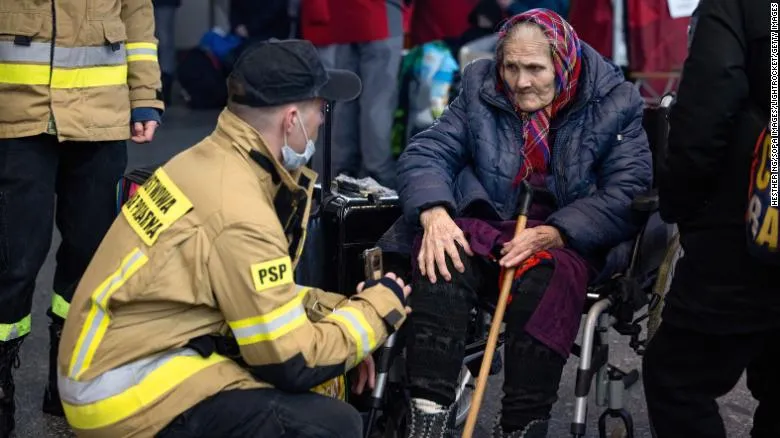In the parking lot of a refugee reception center just inside Poland, Ukrainian women spoke last week with a bus driver as aid worker Chris Skopec stood nearby.
“It looks like I’m going to Germany,” one of the war refugees told Skopec as she laughed hysterically. “How ridiculous is that?”
Then, the next moment, the woman was weeping, Skopec recalled. Her husband and two sons were still far inside Ukraine, where humanitarian needs were burgeoning amid Russia’s bombardment. Here she was, at the first meager waypoint on her migrant journey. And if she took this ride, she’d be headed into the unknown, unsure where she’d even sleep.
“And she got on the bus,” Skopec, executive vice president of global health for Project HOPE, told CNN. “That’s everyone’s story.”
More than 3 million people have fled Ukraine since the invasion began more than three weeks ago, according to the International Organization for Migration, or IOM, and legions more flee to the border every day. Meantime, many more of Ukraine’s 45 million residents remain in a country where active conflict has cut off access to basic supplies like medicine.
To serve their needs, the United Nations and its partners on March 1 launched an emergency appeal for $1.7 billion. Of that, $1.1 billion would go toward helping 6 million people inside Ukraine over the next three months and nearly $551 million help support Ukrainians who fled to other countries in the region.
Aid groups are working now to address the massive humanitarian crisis — inside Ukraine, along the country’s borders and in places of refuge far beyond. At each stage, Ukrainians face distinct needs, aid officials have found, and delivering proper resources at each one is no easy task.

